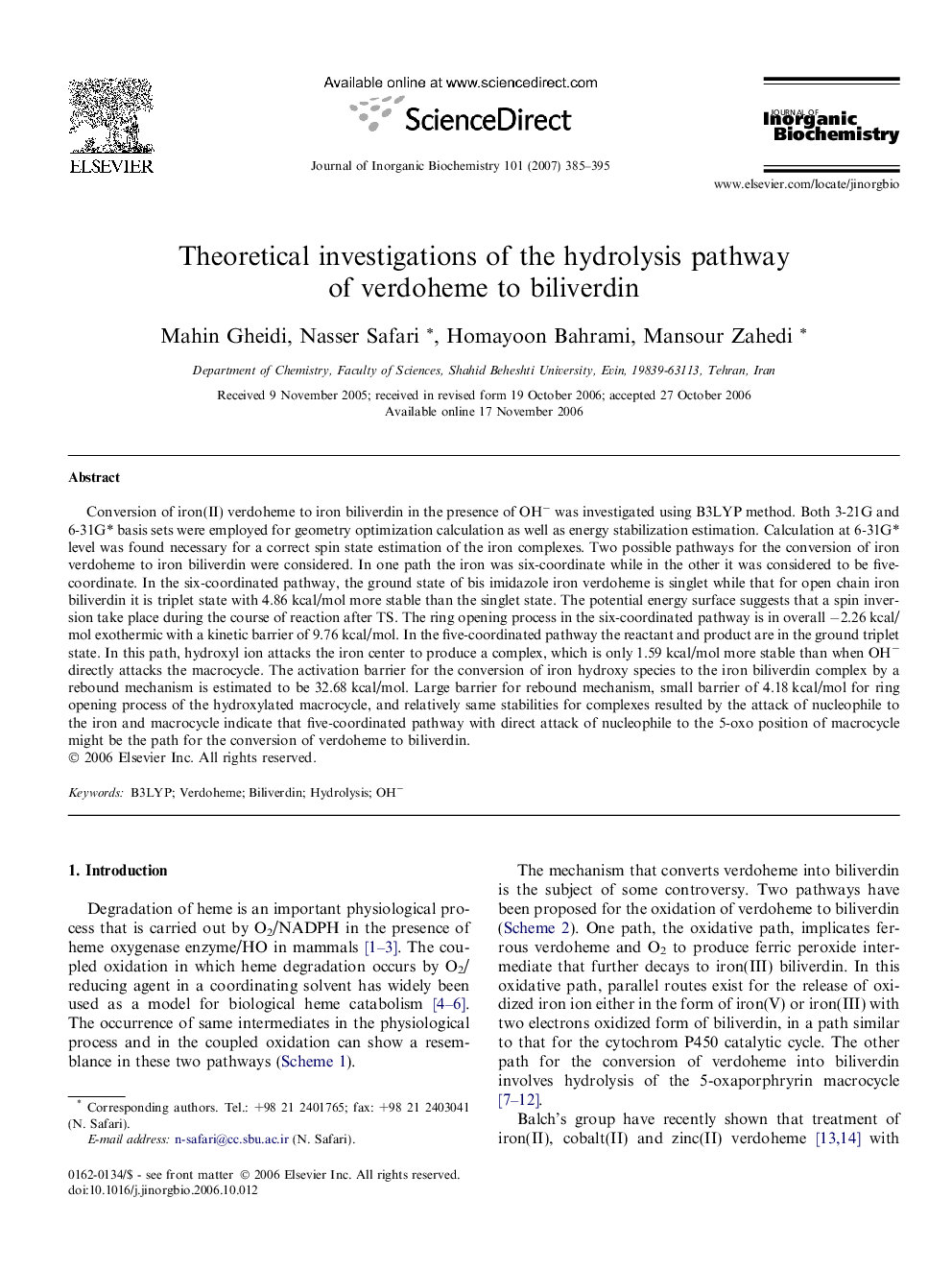| Article ID | Journal | Published Year | Pages | File Type |
|---|---|---|---|---|
| 1317571 | Journal of Inorganic Biochemistry | 2007 | 11 Pages |
Conversion of iron(II) verdoheme to iron biliverdin in the presence of OH− was investigated using B3LYP method. Both 3-21G and 6-31G* basis sets were employed for geometry optimization calculation as well as energy stabilization estimation. Calculation at 6-31G* level was found necessary for a correct spin state estimation of the iron complexes. Two possible pathways for the conversion of iron verdoheme to iron biliverdin were considered. In one path the iron was six-coordinate while in the other it was considered to be five-coordinate. In the six-coordinated pathway, the ground state of bis imidazole iron verdoheme is singlet while that for open chain iron biliverdin it is triplet state with 4.86 kcal/mol more stable than the singlet state. The potential energy surface suggests that a spin inversion take place during the course of reaction after TS. The ring opening process in the six-coordinated pathway is in overall −2.26 kcal/mol exothermic with a kinetic barrier of 9.76 kcal/mol. In the five-coordinated pathway the reactant and product are in the ground triplet state. In this path, hydroxyl ion attacks the iron center to produce a complex, which is only 1.59 kcal/mol more stable than when OH− directly attacks the macrocycle. The activation barrier for the conversion of iron hydroxy species to the iron biliverdin complex by a rebound mechanism is estimated to be 32.68 kcal/mol. Large barrier for rebound mechanism, small barrier of 4.18 kcal/mol for ring opening process of the hydroxylated macrocycle, and relatively same stabilities for complexes resulted by the attack of nucleophile to the iron and macrocycle indicate that five-coordinated pathway with direct attack of nucleophile to the 5-oxo position of macrocycle might be the path for the conversion of verdoheme to biliverdin.
